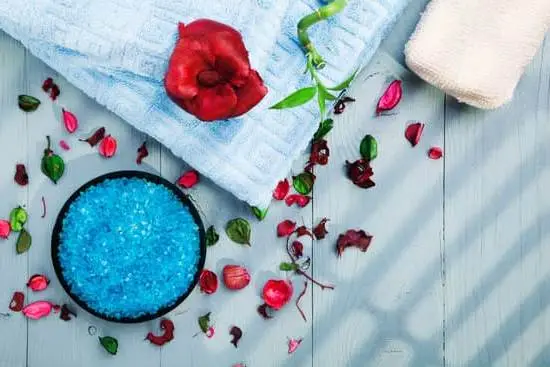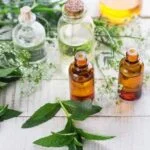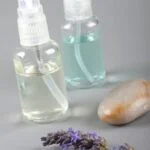Are you interested in creating your own aromatherapy sprays at home? It’s easier than you might think. In this article, we will take a look at the art of making DIY aromatherapy sprays and how they can benefit your overall well-being.
Whether you’re new to aromatherapy or looking for a natural way to freshen up your living space, these homemade sprays are a fantastic option. Let’s get started on our journey into the world of aromatherapy sprays.
Aromatherapy sprays have become increasingly popular as people seek natural ways to enhance their mental and physical health. In this section, we’ll explore what exactly aromatherapy sprays are and the benefits they offer.
From promoting relaxation and reducing stress to uplifting moods and creating a soothing atmosphere, these sprays are versatile and can be tailored to meet your specific needs. We will also delve into the different essential oils that can be used in DIY aromatherapy sprays, giving you an understanding of their properties and how they can positively impact your daily life.
As we continue through this article, we will provide you with everything you need to know about making your own aromatherapy sprays at home. From the tools and supplies required to step-by-step instructions, tips for choosing the right spray for you, creative ways to use them, and safety precautions – we’ve got all the information you need to embark on this exciting DIY project. Get ready to immerse yourself in the world of aromatic bliss.
Benefits of Aromatherapy Sprays
Aromatherapy sprays offer a multitude of benefits for both the mind and body. Whether it’s to relax, revitalize, or promote a sense of well-being, these natural concoctions can be a great addition to your self-care routine. Here are some of the key benefits of incorporating aromatherapy sprays into your daily life:
1. Stress Relief: Aromatherapy sprays can help alleviate stress and anxiety with their calming properties. Scents like lavender, chamomile, and bergamot have been known to promote relaxation and reduce tension.
2. Mood Enhancement: Certain essential oils used in aromatherapy sprays have uplifting qualities that can improve mood and boost energy levels. Citrus scents like lemon and orange are great for providing a refreshing pick-me-up.
3. Improved Sleep Quality: Many people struggle with sleep issues, and aromatherapy sprays can aid in creating a peaceful environment conducive to restful slumber. Lavender, cedarwood, and valerian root are popular choices for promoting better sleep.
Incorporating these benefits into your everyday life is easy with homemade aromatherapy sprays DIY. By creating custom blends tailored to your specific needs, you can enjoy the therapeutic effects of aromatherapy in a convenient spray form.
Essential Oils for Aromatherapy Sprays
The key ingredient in aromatherapy sprays is, of course, essential oils. These concentrated plant extracts are at the heart of aromatherapy and are what make these sprays so effective at promoting relaxation, reducing stress, and improving overall well-being. There are many different essential oils to choose from, each with its own unique properties and benefits.
Some popular essential oils for aromatherapy sprays include lavender, known for its calming and sleep-inducing properties; peppermint, which can help relieve headaches and improve mental focus; eucalyptus, often used to clear the sinuses and promote respiratory health; and citrus oils like lemon or orange, which can uplift the mood and provide an energizing effect. Other options include rosemary for mental clarity, chamomile for relaxation, and tea tree oil for its antibacterial and antifungal properties.
When selecting essential oils for your DIY aromatherapy sprays, it’s important to consider both the scent you enjoy as well as the therapeutic benefits you’re looking to achieve. Some people may also choose to blend different essential oils together to create a custom scent that fits their individual preferences. Experimenting with different combinations can be part of the fun of making your own aromatherapy sprays at home.
Tools and Supplies Needed for Diy Aromatherapy Sprays
Making your own aromatherapy sprays at home is a simple and cost-effective way to bring the benefits of essential oils into your daily routine. Before you get started, you’ll need to gather a few key tools and supplies. Here’s what you’ll need to create your own customized aromatherapy sprays.
Essential Oils
The foundation of any aromatherapy spray is, of course, the essential oils. You can choose one or a combination of essential oils for your spray, depending on the aroma and benefits you’re looking for. Popular options include lavender for relaxation, peppermint for energy, eucalyptus for respiratory support, and citrus blends for mood enhancement.
Carrier Liquid
To dilute and disperse the essential oils in your spray, you’ll need a carrier liquid. Common options include distilled water, witch hazel, or high-proof alcohol such as vodka or rum. These liquids help ensure that the essential oils are evenly distributed and remain stable in the spray bottle.
Spray Bottles
Of course, you’ll also need empty spray bottles to hold your DIY aromatherapy sprays. You can find these at most craft stores or order them online. Make sure to choose bottles that are made of glass or high-quality plastic to prevent chemical reactions with the essential oils.
By gathering these simple tools and supplies, you’ll be ready to start creating your own personalized aromatherapy sprays at home. The process is simple and rewarding, allowing you to tailor the scents and benefits of the sprays to meet your specific needs. With just a few basic ingredients and a little creativity, you can enjoy the therapeutic effects of aromatherapy in a convenient spray form anytime, anywhere.
Step-by-Step Guide to Making Aromatherapy Sprays at Home
Making your own aromatherapy sprays at home is a fun and rewarding DIY project that allows you to create personalized scents tailored to your specific needs. By using natural essential oils, you can enjoy the benefits of aromatherapy in a convenient spray form. Here’s a step-by-step guide on how to make aromatherapy sprays at home.
First, gather the necessary tools and supplies for your DIY project. You will need a clean spray bottle, distilled or filtered water, witch hazel or vodka as a preservative, and your choice of essential oils. Make sure to use high-quality, pure essential oils for the best results.
Next, decide on the purpose of your aromatherapy spray and choose the appropriate essential oils. For example, lavender and chamomile are great for relaxation and sleep aid, while peppermint and eucalyptus are refreshing and energizing. You can also blend different oils to create a unique scent that suits your preferences.
Once you have selected your essential oil blend, it’s time to mix up your aromatherapy spray. Start by filling the spray bottle halfway with water, then add a small amount of witch hazel or vodka as a preservative. Finally, add around 20-30 drops of essential oil to the mixture, depending on how strong you want the scent to be. Shake well before each use to ensure the oils are evenly distributed in the solution.
| Tools and Supplies | Data |
|---|---|
| Spray Bottle | Clean spray bottle |
| Water | Distilled or filtered water |
| Preservative | Witch hazel or vodka |
| Essential Oils | Your choice of high-quality pure essential oils |
Tips for Choosing the Right Aromatherapy Spray for Your Needs
When choosing the right aromatherapy spray for your needs, it’s important to consider the specific benefits you are looking for. Different essential oils have different therapeutic properties, so it’s essential to select the ones that align with your desired outcome.
For example, lavender is known for its calming and relaxing effects, while peppermint is invigorating and refreshing. Researching the various essential oils and their benefits can help you make an informed decision when creating your own DIY aromatherapy sprays.
Another factor to consider when choosing an aromatherapy spray is the scent. Since aromatherapy relies on inhaling the aroma of essential oils, it’s crucial to select a scent that you personally enjoy. Some people may prefer floral scents like rose or jasmine, while others may be drawn to more earthy or citrusy fragrances. Experimenting with different essential oil blends can help you find a scent that resonates with you and provides the desired benefits.
Additionally, it’s important to consider any potential allergies or sensitivities when choosing an aromatherapy spray. Some essential oils can cause adverse reactions in certain individuals, so it’s crucial to do a patch test before using a new blend of aromatherapy spray. Diluting essential oils properly and using them in moderation can also help minimize any potential issues.
| Choosing Aromatherapy Spray | Important Factors |
|---|---|
| Benefits | Consider the specific therapeutic properties of different essential oils for desired outcomes. |
| Scent | Select a fragrance that personally enjoy and resonates with your preferences. |
| Allergies | Perform a patch test prior to use and dilute essential oils properly when making DIY aromatherapy sprays. |
Creative Ways to Use Aromatherapy Sprays
Aromatherapy sprays are not only beneficial for improving mood and promoting relaxation, but they can also be used in a variety of creative ways to enhance your daily life. Whether you want to freshen up your living space or add a pleasant scent to your belongings, diy aromatherapy sprays can be a versatile addition to your routine. Here are some creative ways to use aromatherapy sprays:
- Freshen Up Your Linens: Spray your favorite aromatherapy blend on your bed linens, curtains, or even on your clothes in the closet for a burst of refreshing scent. This not only adds a pleasant fragrance to the fabrics but also helps promote relaxation and better sleep.
- Create a Relaxing Atmosphere: Use aromatherapy sprays as a room spray to create a relaxing atmosphere in your home. Simply spray the blend in the air and let the calming aroma fill the space, making it perfect for meditation, yoga practice, or simply unwinding after a long day.
- Personal Care: Aromatherapy sprays can also be used as a natural personal care product. Use them as a gentle body mist after showering or as a refreshing facial mist throughout the day. The soothing properties of essential oils in the spray can also provide benefits for both skin and mind.
By incorporating diy aromatherapy sprays into these creative uses, you can enjoy their benefits beyond just their aromatic qualities. From enhancing your environment to promoting self-care, these sprays can be an easy and enjoyable addition to your daily routine.
How to Store and Preserve Diy Aromatherapy Sprays
Proper Storage Containers
When it comes to storing your DIY aromatherapy sprays, it’s essential to use the right containers to preserve the quality of the essential oils. Dark glass bottles, such as amber or cobalt blue, are ideal for this purpose as they help protect the oils from light exposure. Additionally, make sure the bottles have tight-fitting lids to prevent air and moisture from getting in and affecting the potency of the spray.
Keep Away From Heat and Sunlight
To ensure the longevity of your DIY aromatherapy sprays, it’s crucial to store them in a cool, dark place. Direct sunlight and heat can cause the essential oils to degrade more quickly. Therefore, consider storing your sprays in a cabinet or drawer away from windows and heat sources, such as radiators or ovens.
Labeling and Date Tracking
Another important aspect of storing and preserving DIY aromatherapy sprays is proper labeling. Be sure to label each bottle with its contents and date of creation. This will help you keep track of when the spray was made and when it should be used by. It also prevents confusion if you have multiple sprays with different blends. By knowing when it was made, you can ensure that you’re using it within its shelf life for optimal effectiveness.
By following these storage and preservation tips, you can extend the shelf life of your DIY aromatherapy sprays and continue to enjoy their benefits for an extended period.
Safety Precautions When Using Aromatherapy Sprays
When using aromatherapy sprays at home, it is important to take certain safety precautions to ensure a positive and safe experience. Aromatherapy sprays are generally safe, but it is always best to use them with caution, especially if you have any underlying health conditions or sensitivities. Here are some safety tips to keep in mind when using aromatherapy sprays DIY:
First and foremost, it is crucial to dilute essential oils properly when making DIY aromatherapy sprays. Essential oils are highly concentrated and can cause skin irritation or allergic reactions if not diluted correctly. Always follow the recommended dilution ratios to ensure the safety of your homemade sprays.
Another important safety precaution to consider is the potential allergenic effects of certain essential oils. Before using any essential oil in your DIY aromatherapy spray, it is advisable to perform a patch test on a small area of your skin to check for any adverse reactions. This is particularly important if you have sensitive skin or known allergies.
In addition, be mindful of where and how you use your aromatherapy sprays. Avoid spraying directly onto your face, eyes, or open wounds. Instead, lightly mist the spray into the air and allow the aroma to disperse naturally.
It’s also a good idea to avoid using aromatherapy sprays in enclosed spaces with poor ventilation, as inhaling too much of the spray can potentially cause respiratory issues for some individuals. Taking these simple safety precautions will help you enjoy the benefits of DIY aromatherapy sprays while minimizing any potential risks.
Conclusion
In conclusion, creating your own aromatherapy sprays at home can be a rewarding and beneficial experience. Not only do you have control over the ingredients and scents used, but you also have the satisfaction of knowing that you are creating a product that is safe and natural.
By following the step-by-step guide provided and taking into account the tips for choosing the right aromatherapy spray for your needs, you can tailor your DIY sprays to suit your preferences and lifestyle.
Furthermore, incorporating aromatherapy sprays into your daily routine can provide numerous benefits for both your physical and mental well-being. Whether it’s using soothing lavender spray to help relax before bedtime or invigorating citrus spray to boost energy levels during the day, these homemade concoctions can enhance your overall quality of life. Plus, with creative ways to use aromatherapy sprays such as in yoga practice or as room fresheners, there are endless opportunities to enjoy their therapeutic effects.
Lastly, it’s important to remember safety precautions when using these DIY aromatherapy sprays. Proper storage and preservation techniques should be observed to maintain their potency and efficacy. Additionally, always be mindful of potential allergic reactions or sensitivities to certain essential oils. Overall, by embracing the world of DIY aromatherapy sprays, you can create a more holistic environment within your home while reaping the many benefits they have to offer.
Frequently Asked Questions
How Do You Make Aromatherapy Spray?
To make an aromatherapy spray, start by mixing 10-20 drops of essential oils with 2 ounces of water or hydrosol in a spray bottle. Shake well before using to ensure the oils are properly dispersed.
Can You Mix Essential Oil and Water to Make a Spray?
Yes, essential oils can be mixed with water to make a spray. However, it’s important to use a dispersant like witch hazel or vodka to help the oil and water mix together effectively and prevent separation.
Why Add Witch Hazel to Essential Oil Sprays?
Witch hazel is often added to essential oil sprays because it acts as a natural emulsifier, helping the essential oils to disperse evenly throughout the water. It also has astringent properties that can help to tighten and tone the skin when used in body sprays.

Are you looking for a natural way to improve your health and wellbeing?
If so, aromatherapy may be the answer for you.





